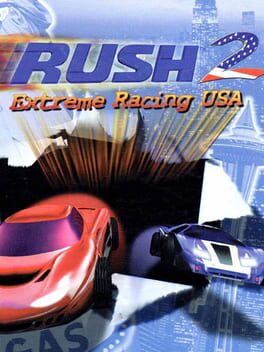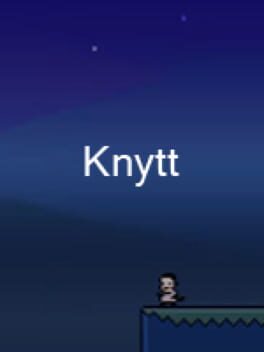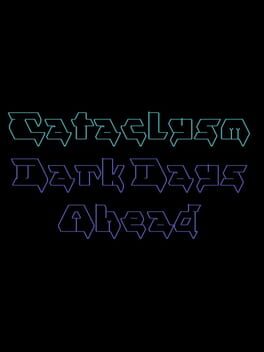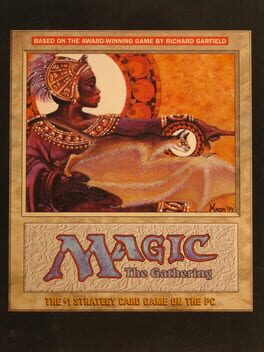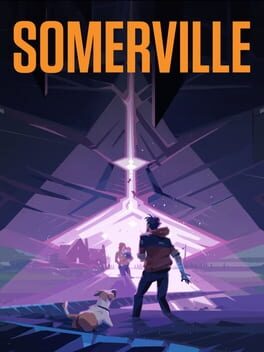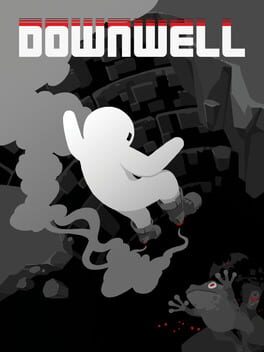Nexus6
2022
This review contains spoilers
Stray's setup is beautifully minimal and lets you simply enjoy napping and wandering around with your cat crew (family? friends?). Even though where you can jump is scripted, it's still really fun to wander around and see the remains of the world. Then, of course you fall and become separated from your crew, and the game really has an opportunity to get great.
Unfortunately, I think with the addition of the robots (which in turn adds the story of the humans), you get very far away from a game that could have been a Milo and Otis style lost-and-found story, with no dialogue, text, or really any story at all needed. The world would have told it's own story, and it's obvious from the opening that they can get you to care about the cats without them doing quests for robots abandoned by humans.
The fact that the game never gets you back to your crew even after all the detours is borderline criminal. I thought for SURE I would find them at the end. That was the saddest part of the game.
I won't say I didn't have fun, but the promise outweighs the delivered product. In some other universe there is a Team Ico version of this game that is incredible.
Unfortunately, I think with the addition of the robots (which in turn adds the story of the humans), you get very far away from a game that could have been a Milo and Otis style lost-and-found story, with no dialogue, text, or really any story at all needed. The world would have told it's own story, and it's obvious from the opening that they can get you to care about the cats without them doing quests for robots abandoned by humans.
The fact that the game never gets you back to your crew even after all the detours is borderline criminal. I thought for SURE I would find them at the end. That was the saddest part of the game.
I won't say I didn't have fun, but the promise outweighs the delivered product. In some other universe there is a Team Ico version of this game that is incredible.
I remember having fun with Rush 2's regular tracks, but it was the stunt map that really made this game something special. Looking like a dev-test level that was just left in as a 'why not', the stunt map is a huge grey box with lots of different shaped (and colored) ramps. There is no special mode to this map, you just drive around and do whatever stunts you want, and it was everything I could have ever wanted as a 14-year-old.
At that age (and to a somewhat lesser extent, today), I had an intense urge to do nothing but watch things go off jumps and see how they land, and Rush 2 gave me that a la carte and with no fuss.
At that age (and to a somewhat lesser extent, today), I had an intense urge to do nothing but watch things go off jumps and see how they land, and Rush 2 gave me that a la carte and with no fuss.
1997
To me, it's the matte backgrounds that are the key element to the Final Fantasy games (and other PS1 RPGs) of this era, and FF7 made the most of them. Whether it's following the trail of blood in the top-down Shinra ascent, or marching down the occupied streets of Junon in dutch angle with fascist iconography hanging from the buildings, FF7 gets so much storytelling mileage from FRAMING.
I dream of a day when mainstream RPGs realize that camera angles and bespoke environments make for a really fun way to play out a story (not to mention explore!), but until then we'll have to make do with running behind our main character and seeing the same (very) high-res assets over and over.
In short, I think this game broke the gaming industry into a new era not because it had a great story or characters (though it does also have those things!), and not because of it's bombastic CGI cutscenes (though those were cool at the time!) but because it felt like it was the end of GRAPHICS and the beginning of ART in terms of the visual presentation, because you were literally running through paintings!
Without the rest of the game being as strong as it is, it wouldn't have mattered, but the complete package here was truly knockout on release. This game is one of the few that made me think differently about games after playing it.
Sephiroth being the best villain in the series doesn't hurt either!
I dream of a day when mainstream RPGs realize that camera angles and bespoke environments make for a really fun way to play out a story (not to mention explore!), but until then we'll have to make do with running behind our main character and seeing the same (very) high-res assets over and over.
In short, I think this game broke the gaming industry into a new era not because it had a great story or characters (though it does also have those things!), and not because of it's bombastic CGI cutscenes (though those were cool at the time!) but because it felt like it was the end of GRAPHICS and the beginning of ART in terms of the visual presentation, because you were literally running through paintings!
Without the rest of the game being as strong as it is, it wouldn't have mattered, but the complete package here was truly knockout on release. This game is one of the few that made me think differently about games after playing it.
Sephiroth being the best villain in the series doesn't hurt either!
2006
A beautiful, quiet, easy to play, free metroidvania. Really leans into what a lot of others in the genre don't, and that is atmosphere and sense of place. Despite lower fidelity graphics, Knytt gets a lot from its tight controls, welcoming tone, and excellent sound design. The footstep sound effects in this game are perhaps my favorite of all time.
A freeware classic.
A freeware classic.
Impossible to review properly, as it is an ongoing open-source project that is constantly changing, but the core experience of Cataclysm is incredibly robust and unparalleled in any other similar title.
Like the similarly complex Dwarf Fortress or Rimworld, Cataclysm's main draw is depth. Instead of focusing on large scale system interaction like those colony sims, Cataclysm is focused on one individual person and the absolutely massive list of places they can visit, things they can do, items they can find, vehicles they can build, encounters they can have, and all the emergent stories that come with that. Everything in the game can be broken down and built into something new (if you have the knowhow), which presents near infinite options for every moment. With excellent difficulty controls you can tailor your apocalypse however you want. It speaks to the strength of the game that playing without enemies is still fun!
The vehicle building system is especially fun and probably the point where the game hooks most people who are going to be hooked. Your first deathmobile is a Cataclysm rite of passage. Long, successful Cataclysm runs are the kind that stick with you.
I love to check back in every few months and see what new things I have to learn again (there is a very helpful keybindings menu now!) and what new systems might draw me back into another game.
Like the similarly complex Dwarf Fortress or Rimworld, Cataclysm's main draw is depth. Instead of focusing on large scale system interaction like those colony sims, Cataclysm is focused on one individual person and the absolutely massive list of places they can visit, things they can do, items they can find, vehicles they can build, encounters they can have, and all the emergent stories that come with that. Everything in the game can be broken down and built into something new (if you have the knowhow), which presents near infinite options for every moment. With excellent difficulty controls you can tailor your apocalypse however you want. It speaks to the strength of the game that playing without enemies is still fun!
The vehicle building system is especially fun and probably the point where the game hooks most people who are going to be hooked. Your first deathmobile is a Cataclysm rite of passage. Long, successful Cataclysm runs are the kind that stick with you.
I love to check back in every few months and see what new things I have to learn again (there is a very helpful keybindings menu now!) and what new systems might draw me back into another game.
1997
Forget the regular mode, Shandalar was the brilliant part of this game. A singleplayer open-world deckbuilder game before it's time. It feels janky by modern standards, but there is a really fun formula here that no one has quite been able to replicate since (MTG PC games have gone the complete other direction into multiplayer-focused titles).
Shandalar wrapped the core fun of Magic (getting new cards!) into a singleplayer RPG of sorts, where you wander around and map, finding locations with cards, towns to buy cards in, monsters to win cards from, etc. You defeat the high wizards of each of the Magic colors and that's it. Almost a rougelike too in the sense that you can replay and have a totally different game. Again, far ahead of it's time.
Shandalar wrapped the core fun of Magic (getting new cards!) into a singleplayer RPG of sorts, where you wander around and map, finding locations with cards, towns to buy cards in, monsters to win cards from, etc. You defeat the high wizards of each of the Magic colors and that's it. Almost a rougelike too in the sense that you can replay and have a totally different game. Again, far ahead of it's time.
2022
Despite sharing DNA with Inside, Somerville doesn't seem to understand what made that game so great. The story isn't nearly as interesting but most unforgivable are the controls, which you fight with the entire game. Many interactive points are even marked in yellow and it's still difficult to know if what you are doing is correct simply because the game forces you to be in a very exact place in order to interact with stuff. I would routinely try to use something as simple as a wall switch only to hit 'A' 12 times before anything actually worked. Movement and interaction are both frustrating and that's all you do in the game. I can maybe see this game feeling different if it came out 10 years ago, but some nice visual moments don't do much to save this game in 2022.
2005
Still the best baseball game of all time. MLB The Show is a great franchise, but I miss the days when the Franchise mode was the main attraction, not an online mode with Seasons and timed unlockables, etc.
I played this game through mods for 13 years. Every time I would try a new baseball game, I would always find myself coming back to MVP05. It's almost certainly the game that I've put the most hours into ever.
Manny Ramirez is also probably my favorite player (at least of that era) so that doesn't hurt!
I played this game through mods for 13 years. Every time I would try a new baseball game, I would always find myself coming back to MVP05. It's almost certainly the game that I've put the most hours into ever.
Manny Ramirez is also probably my favorite player (at least of that era) so that doesn't hurt!
2015
Nothing in the design is wasted, every choice has pros and cons even down to where you choose to move at any given time. The result is a platformer that uses it's simplicity as a strength rather than a weakness, being both easy to learn (only one button plus directional!) and difficult to master. The overwhelming feeling of this game, perhaps more than any other I've ever played, is Zen. When you get in the groove, you are at one with the game and it feels amazing.
Plus the palette swaps are a great idea for unlocks and they serve to keep every new run fresh.
Plus the palette swaps are a great idea for unlocks and they serve to keep every new run fresh.

